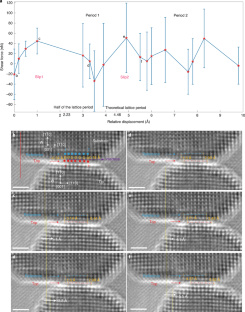カリフォルニア州では過去半世紀にわたって樹木被覆が急激に減少しているが、州南部の山岳地帯ほど早く減少した地域はない Tree cover across California has declined sharply over the last half century, but nowhere faster than in the state’s southern mountains
2022-07-23 カリフォルニア大学校アーバイン校(UCI)
新しい研究によると、州全体にわたって樹木の被覆が減少しており、特に南カリフォルニアでは1985年以来14パーセントも森林が減少していることが明らかになった。
シエラネバダや中央・北海岸など他の地域では、森林が山火事やその他の災害からある程度回復しているのに対し、研究者は、気候が高温・乾燥である南カリフォルニアでは、木が同じ速度で再生されないことを発見した。
<関連情報>
- https://www.sandiegouniontribune.com/news/environment/story/2022-07-23/southern-california-forests-wildfire-drought
- https://agupubs.onlinelibrary.wiley.com/doi/full/10.1029/2021AV000654
カリフォルニア州における火災の増加と気候ストレスによる樹木被覆の損失 Losses of Tree Cover in California Driven by Increasing Fire Disturbance and Climate Stress
Jonathan A. Wang,James T. Randerson,Michael L. Goulden,Clarke A. Knight,John J. Battles
Advancing Earth and Space Sciences. Published: 06 July 2022
DOI:ttps://doi.org/10.1029/2021AV000654

Abstract
Forests provide natural climate solutions for sequestering carbon and mitigating climate change, yet are increasingly threatened by increasing temperature and disturbance. Understanding these threats requires accurate information on vegetation dynamics and their drivers, which is currently lacking in many regions experiencing rapid climate change such as California. To address this, we combined remote sensing observations with geospatial databases to develop annual maps of vegetation cover (tree, shrub, and herbaceous) and disturbance type (fire, harvest, and forest die-off) in California at 30 m resolution from 1985 to 2021. Considering both changes in cover fraction and areal extent, California lost 4,566 km2 of its tree cover area (6.7% relative to initial cover) since 1985. Substantial gains in tree cover area during the 1990s were more than offset by fire-driven declines since 2000, resulting in greater shrub and herbaceous cover area. Tree cover loss occurred in all ecoregions but was most severe in the southern mountains, where losses from wildfire were not compensated by regrowth in undisturbed areas. Fires and tree cover area loss generally occurred where summer temperatures were greater than 17.5°C, whereas net tree cover gain often occurred in cooler areas, suggesting that ongoing climate warming is threatening forests in many areas. California’s vegetation is undergoing rapid transformation, with disturbance rates and climate change posing substantial potential risks to the integrity of California’s terrestrial carbon sink.
Key Points
- We mapped annual disturbance and vegetation change in California from 1985 to 2021 using time series remote sensing and geospatial data
- Tree cover area declined by 6.7% during the 37-year study period, primarily from increases in wildfire
- Higher levels of tree cover loss in warmer and drier areas provide evidence that climate change threatens California’s forests
Plain Language Summary
Trees provide nature-based solutions to slow climate change. However, increasing fires and drought threaten the integrity of forests in many parts of the world. These threats are especially important in areas experiencing rapid climate change, such as in California, yet it remains challenging to measure their impact because of a lack of digital vegetation maps at high spatial resolution that can accurately measure changes over a period of decades. In this study, we compiled satellite data and archival records with machine learning to map vegetation type (tree, shrub, and grass) and disturbance agent (fire, harvest, and drought) in California from 1985 to 2021. Over these 37 years, California lost 4,566 km2 of its tree cover area, equal to 6.7% of its initial tree cover in 1985. Tree cover area initially increased in the 1990s, but rapidly declined after 2000 from larger and more frequent wildfires, resulting in an expansion of shrub and grass cover area. Fires and tree cover loss generally occurred in warmer areas. Considering ongoing climate warming and disturbance trends, California’s forest resources are likely to continue to decline, limiting the carbon sequestration potential of the state’s natural and working lands.



